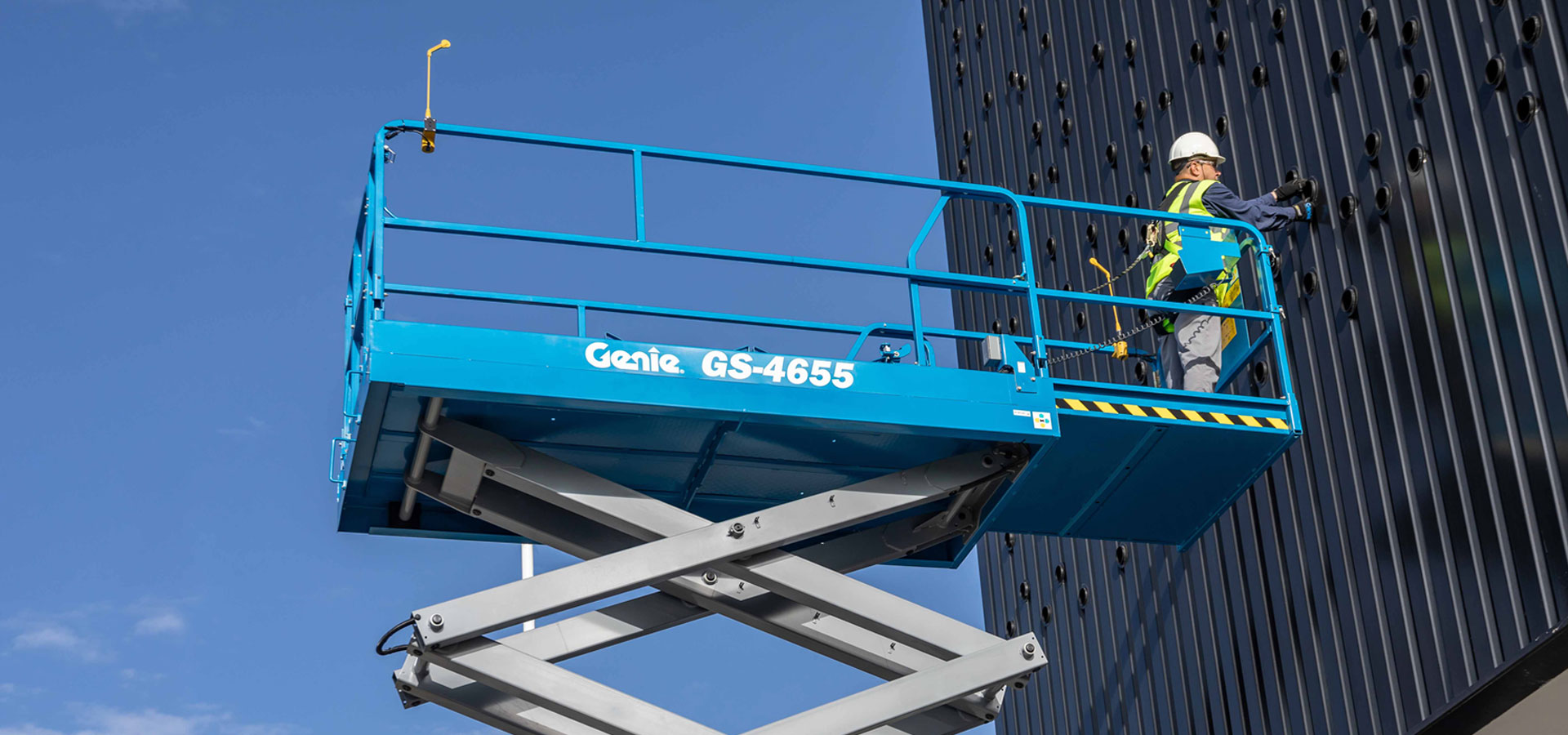Por: Scott Owyen – Director of Training Genie
For every facility manager I've ever met, whether in a warehouse, school, data center, or office building, security is their top priority. Safety is, and always has been, Genie's top priority. That's why we focus on providing safe and productive mobile lifts and robust training programs.
Once the equipment is in the field, operators must follow the operating practices outlined in the manufacturer's operator's manual to keep the equipment operating safely and productively.
The best way to reduce risks when operating a telescopic boom lift and scissor lift is to know and follow these eight tips:
1. Get the right training
All employees must complete appropriate general and hands-on training with a qualified trainer on the specific equipment they will be operating. This includes carefully reading the operator's manual and safety signs on the machine, as well as understanding the function and location of all safety devices and controls prior to operation.
2. Inspect equipment and work area
Perform a pre-operation inspection and functional testing of equipment before each shift. If the machine fails in any of these, ensure it is immediately tagged and removed from service until it can be repaired by a qualified service technician. Never use damaged or malfunctioning equipment.
You should also perform a job site hazard assessment before moving a machine onto the job site. Look for dangerous situations such as drop-offs, holes, slopes, slippery or unstable surfaces, overhead obstacles, high-voltage power sources, and any other hazards that may exist and develop a plan to eliminate or avoid them.
3. Emphasize communication
Communicate hazards to other staff. Never assume that a co-worker is aware of the risks involved in a task, especially if they are inexperienced or new to the task. Whenever possible, have operators keep a cell phone or two-way radio with them on the tail lift, and always have a rescue plan in place in case the secondary descent system malfunctions.
4. Wear the proper personal protective equipment
When necessary, use proper fall protection and always attach to designated anchor points. A properly adjusted full body harness and proper lanyard or self retracting lifeline will reduce the chance of an operator falling off the platform. Other personal protective equipment, such as a safety vest, steel-toed boots, and a hard hat, should be selected based on the conditions of your facility.
5. Keep deck clear of debris
Scrap materials, buckets, large tool boxes, and other items can create a serious tripping hazard. You must remove anything from the platform that is not absolutely necessary to do your job. Avoiding clutter also creates a more efficient workspace and inspires confidence that your operation is organized and professional.
6. Lift only on a firm, level surface
If the tilt alarm sounds, it means you must move to a level surface before raising the header. If you are already raised when the alarm sounds, immediately lower the platform and move to a firm, level area.
7. Do not sit, stand or climb on the platform railings
Operators must always maintain a firm footing on the platform floor. If an operator is required to reach an elevated work area that is too small for the platform railings to allow access, determine if the selected work platform is right for the job.
Alternatively, the use of a manufacturer-approved device specifically designed to provide additional access to confined spaces is recommended.
8. Do not leave a raised platform without proper training and authorization
Always maintain a 100% connection and get a letter of approval from the manufacturer that provides proper guidance. Do not step off the platform when it is raised.
Make sure you and your employees follow these safety tips when using mobile elevating work platforms. If you have additional questions or would like more information on Genie® safety training programs, please visit our TRAINING section.

